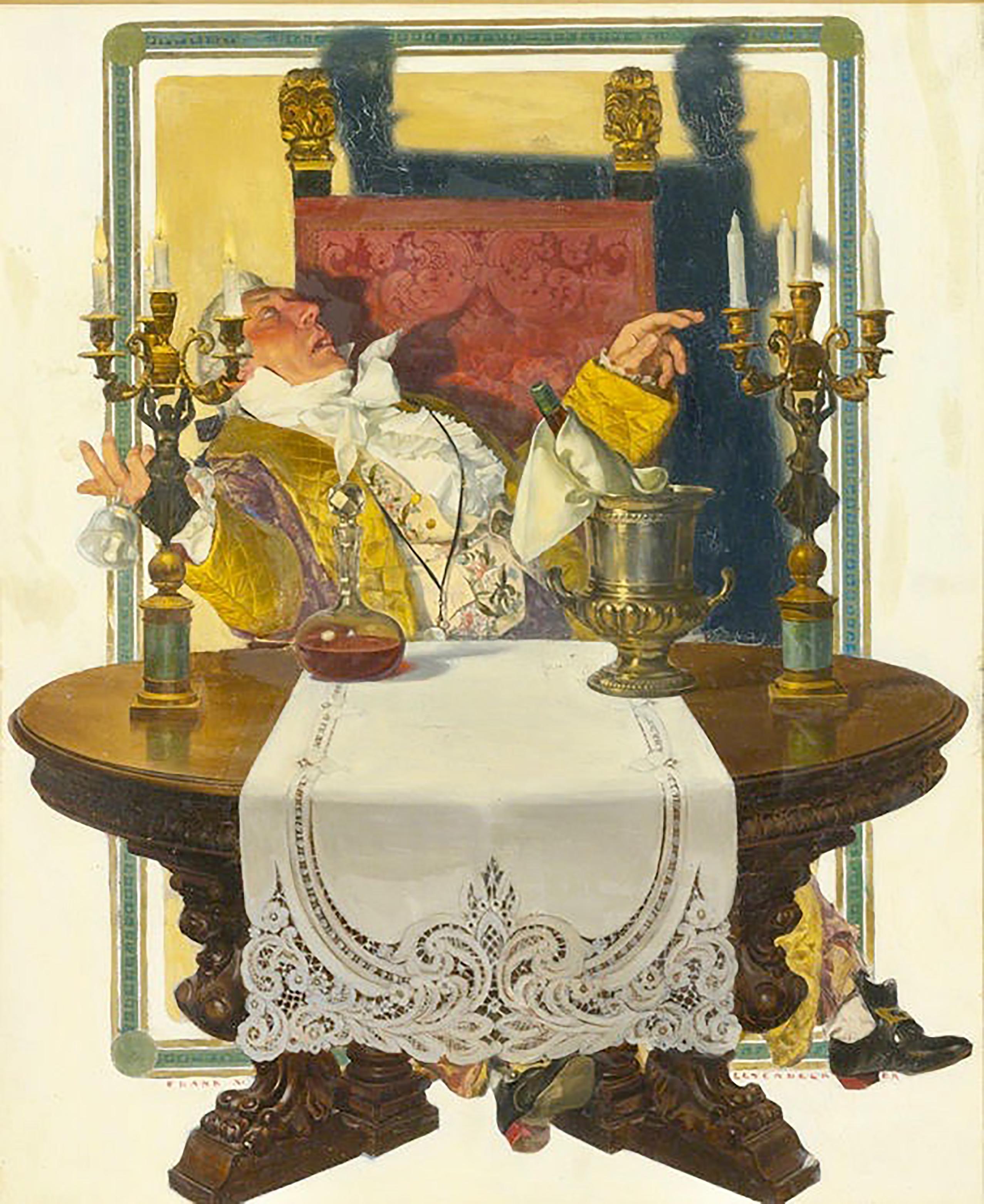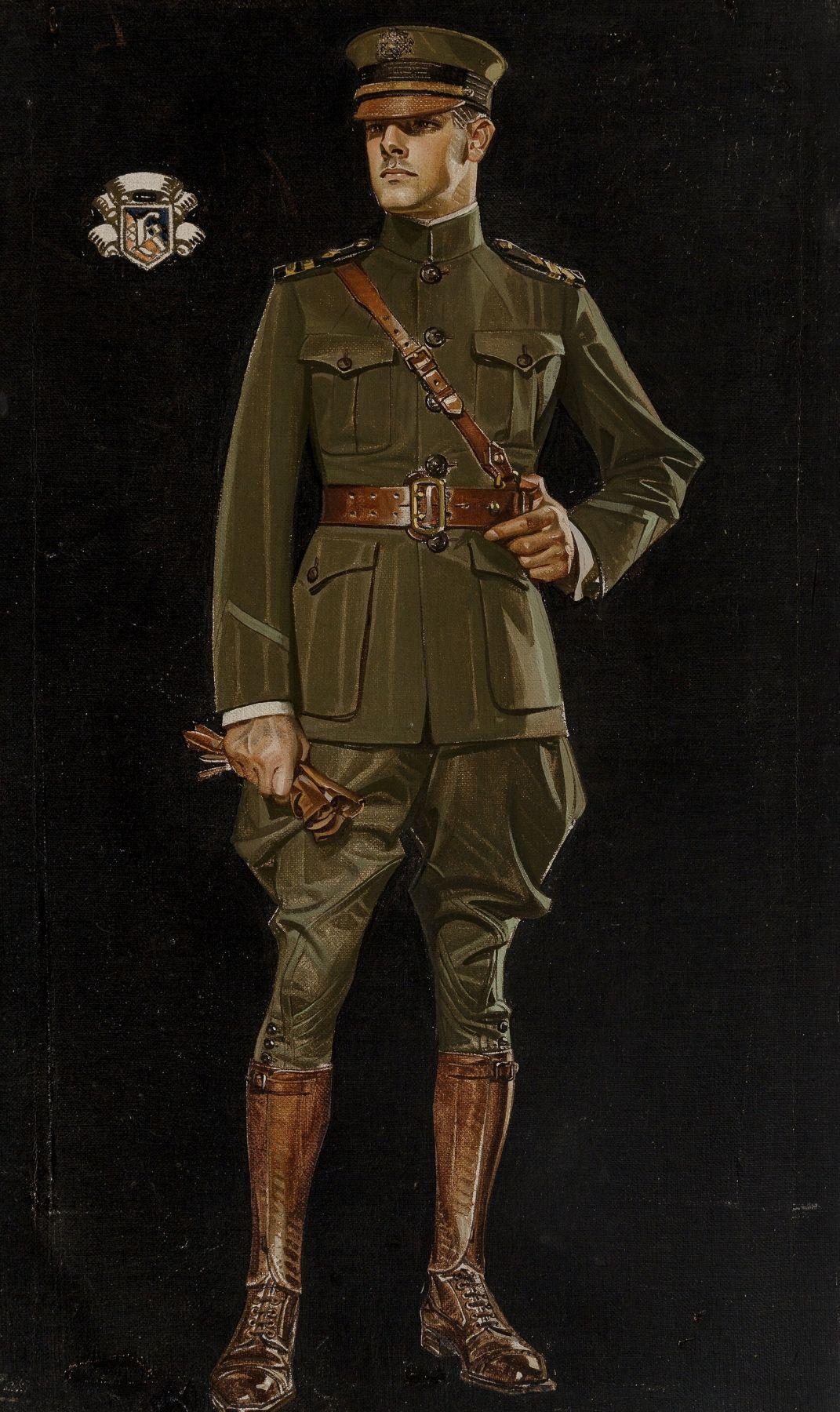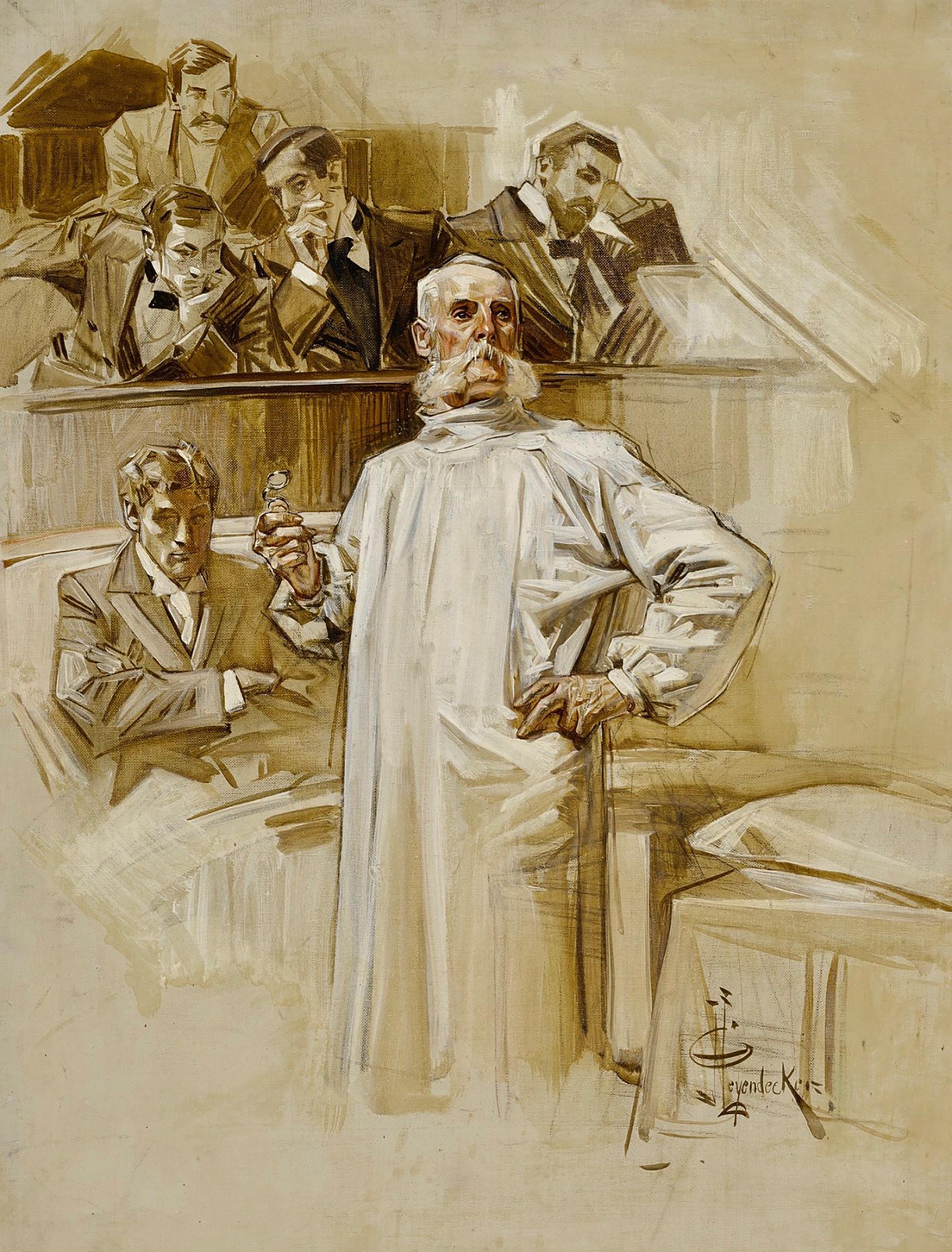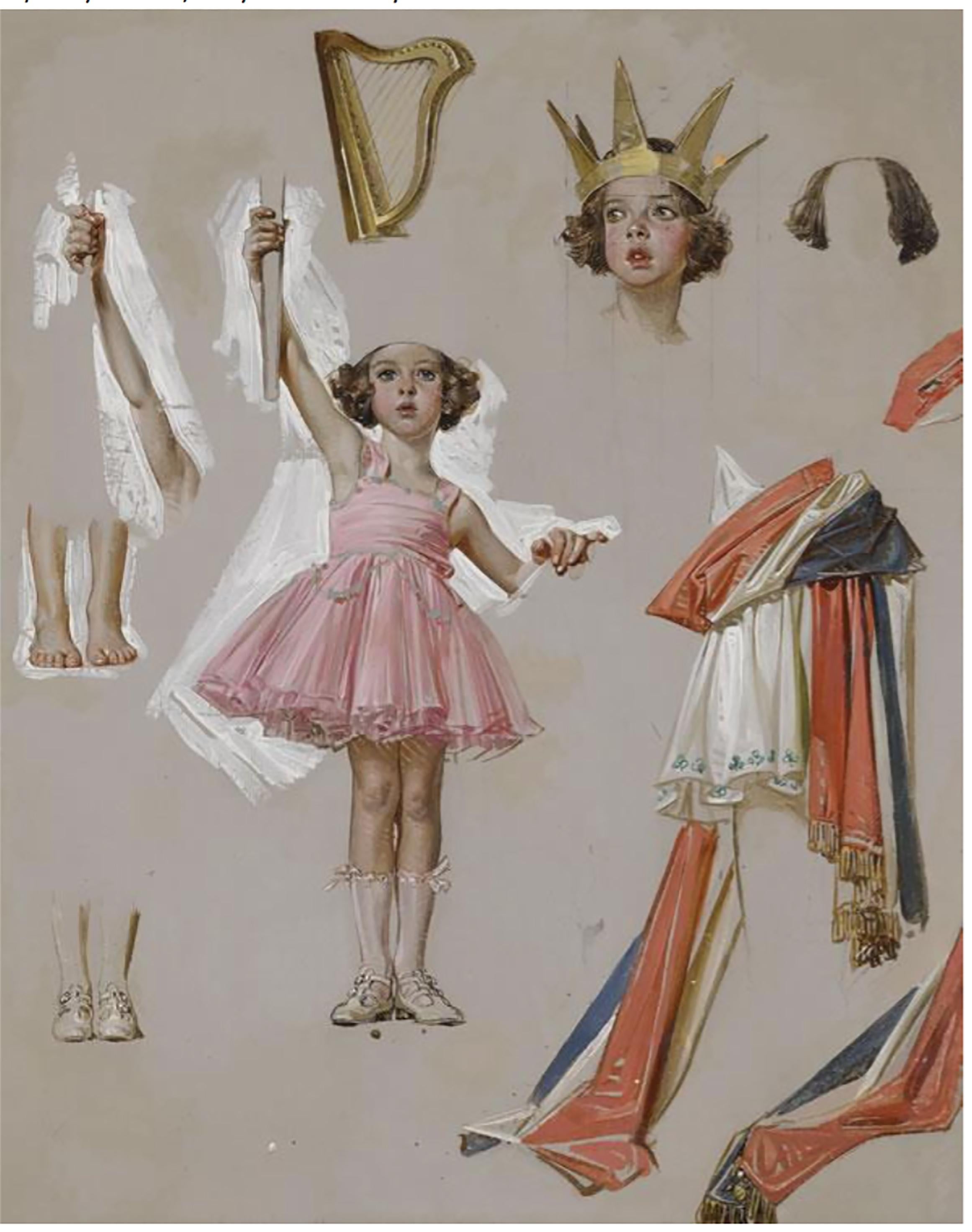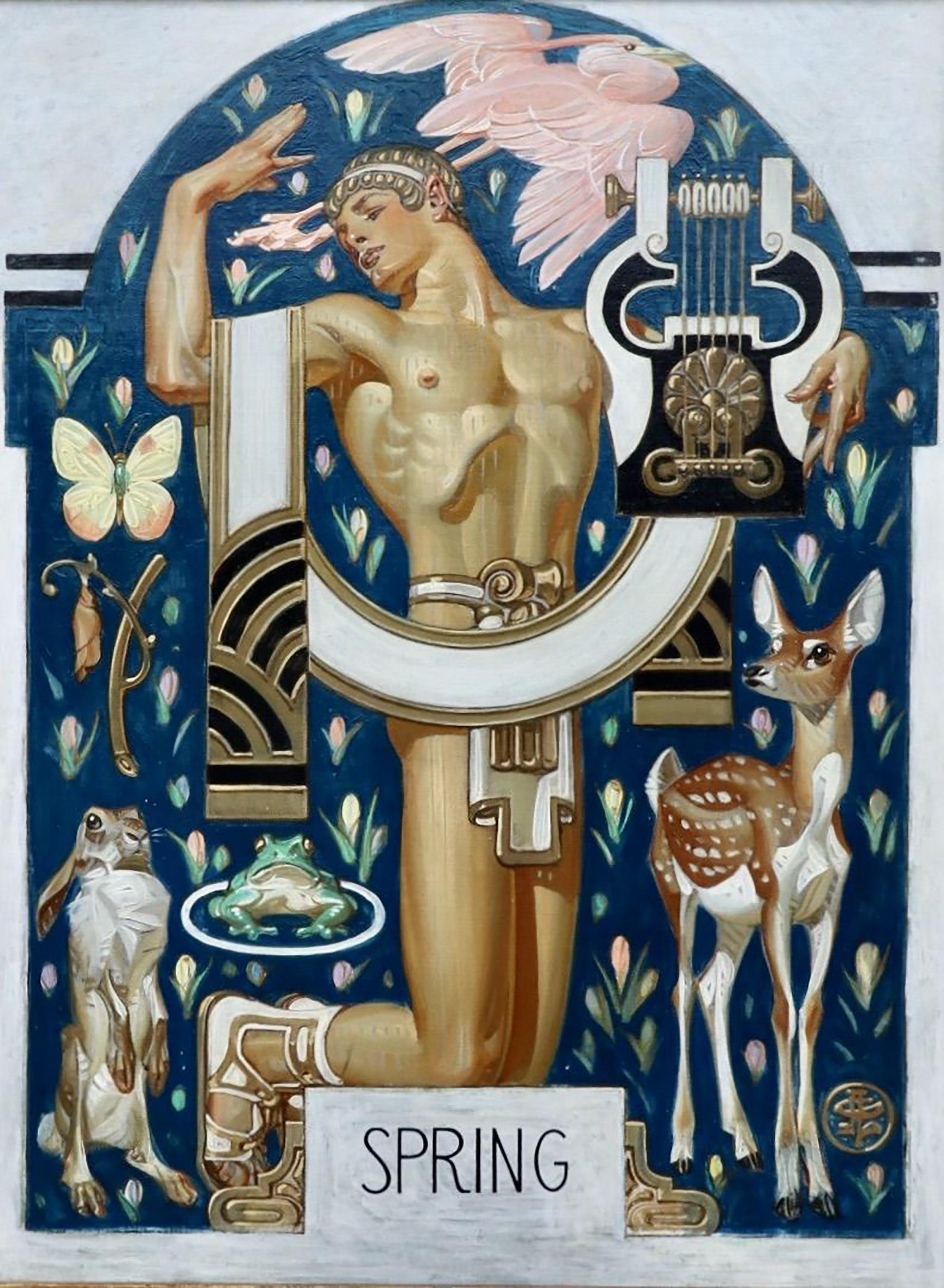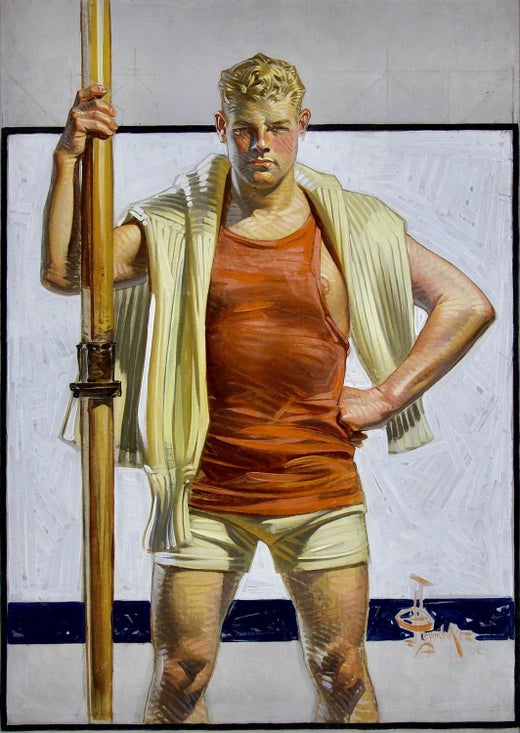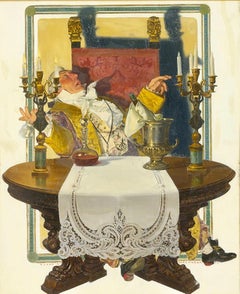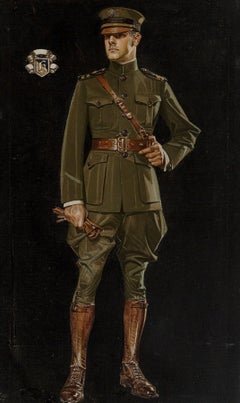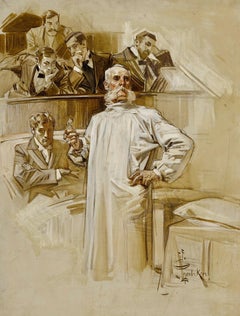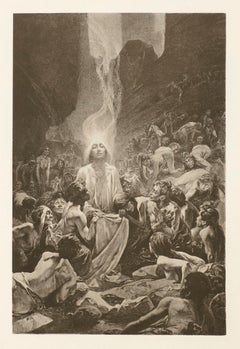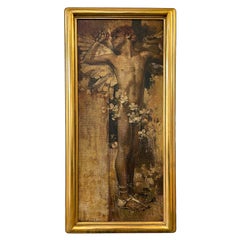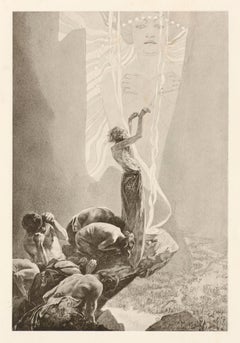Joseph Christian LeyendeckerChrist with Sainted Knights1900s
1900s
About the Item
- Creator:Joseph Christian Leyendecker (1874 - 1951, American)
- Creation Year:1900s
- Dimensions:Height: 30.25 in (76.84 cm)Width: 20 in (50.8 cm)
- Medium:
- Period:
- Condition:
- Gallery Location:Fort Washington, PA
- Reference Number:Seller: 43151stDibs: LU38438497922
Joseph Christian Leyendecker
Joseph Christian "J.C." Leyendecker was born in Germany in 1874. He immigrated to the United States with his family in 1882. His eldest brother, Adolph, became a prominent stained glass artist, and Joe, as he was called, had an early artistic calling.
After studying at the Chicago Art Institute under John H. Vanderpoel, J.C. Leyendecker enrolled at the Académie Julien in 1896, where he studied for a year with his younger brother Frank in the Beaux-Arts tradition. During his time there, he was exposed to and influenced by the works of Art Nouveau painters and printmakers Henri de Toulouse-Lautrec, Jules Chéret and Alphonse Mucha, with whom he formed a strong friendship. The next year, he staged his first one-man exhibition at the Salon du Champ-de-Mars and made the auspicious acquaintance of Paul Gauguin.
In 1898, Leyendecker produced the first of 48 covers for Collier’s magazine. The next year, he painted his first cover for The Saturday Evening Post magazine, which was the beginning of a 44-year association with that esteemed publication. Throughout his career, he would also paint covers for Life magazine, illustrations for a library of books, and transform advertising for such companies as B. Kuppenheimer & Co. and Interwoven Socks. His work for Arrow Shirt is the most well-known and beloved.
Using his lover and manager, Charles Beach, as a model, Leyendecker created the ultimate image of modern American masculinity. His work for Kuppenheimer, also known as the House of Kuppenheimer, is just as iconic. Founded in 1876, the company became the manufacturer of uniforms for the United States Army during World War I. Thanks to Leyendecker's advertising, the firm became synonymous with the ultimate in male taste and desirability.
Unfortunately, near the end of his career, as Leyendecker’s associations with Collier’s and The Saturday Evening Post came to an end, his work fell into obscurity. When he died in 1951, his great friend Norman Rockwell, who commemorated their relationship in his painting Waiting for the Art Editor, served as one of his pallbearers.
Find original J.C. Leyendecker prints and paintings on 1stDibs.
(Biography provided by M.S. Rau)
- ShippingRetrieving quote...Shipping from: Fort Washington, PA
- Return Policy
More From This Seller
View AllEarly 1900s Figurative Paintings
Oil, Board
Early 1900s Figurative Paintings
Board, Watercolor, Gouache
1910s Figurative Paintings
Canvas, Oil
20th Century Figurative Paintings
Canvas, Oil
1920s Figurative Paintings
Canvas, Oil
1920s Figurative Paintings
Canvas, Oil
You May Also Like
1910s Realist Figurative Paintings
Oil
1890s Art Nouveau Prints and Multiples
Lithograph
Early 20th Century American Art Nouveau Paintings
Paint
1890s Art Nouveau Prints and Multiples
Lithograph
1930s American Realist Figurative Paintings
Gouache, Pencil
Early 20th Century Post-Impressionist Figurative Paintings
Oil, Canvas
